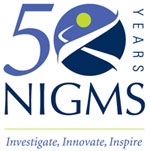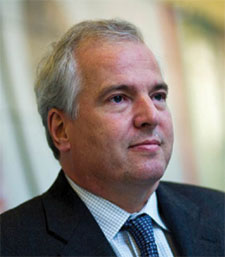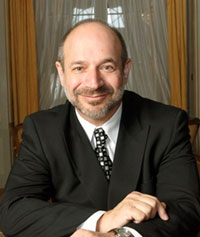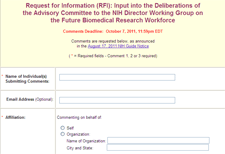In this 200th Feedback Loop post, I’d like to share budget slides I presented earlier this month during the open session of our National Advisory General Medical Sciences Council meeting. The session also included updates on several of our initiatives as well concept clearances for two new ones, which are briefly described in the meeting summary.
As part of my acting director’s report, I presented our Fiscal Year 2012 funding plan and focused specifically on our budget for research project grants (RPGs), which includes mostly R01s. The figures below are based on a budget estimate for Fiscal Year 2012, which begins on October 1. Since NIH has not yet received an appropriation for the next fiscal year, the estimate assumes that the budget will be at approximately the Fiscal Year 2011 level.
Figure 1 breaks down the total NIGMS budget of about $2.034 billion into its major components and shows that 67% of the budget will support RPGs. Of that portion, we will use around 76% to pay noncompeting grants (commitments on grants already awarded). This leaves about 23% for competing grants and 1% for supplements.

Figure 1. Fiscal Year 2012 breakdown of the estimated NIGMS budget into its major components. About 67% of the budget will support research project grants (RPGs), and of that, 76% will be used to pay noncompeting grants, 23% to pay competing grants and 1% to pay supplements.
Figure 2 breaks down the competing RPG budget. It shows that 93% will be used to pay investigator-initiated research and that the remaining 7% will fund mainly R01 grants submitted in response to requests for applications (RFAs), which have been carefully considered by NIGMS staff in consultation with the scientific community and have been approved by our Advisory Council during the concept clearance process.

Figure 2. Fiscal Year 2012 breakdown of the estimated competing RPG budget. About 93% of the budget will be used to pay investigator-initiated research, and the remainder will fund R01 grants submitted in response to RFAs.
The final figure shows that the portion of the competing RPG budget spent on investigator-initiated research during the last 8 years has varied between 87% and 94%, further indicating that NIGMS commits a relatively small amount of RPG funds to grants that are not investigator-initiated.

Figure 3. Comparison of RPG budgets in Fiscal Years 2004-2011 for investigator-initiated research versus set-asides for grants in response to specific RFAs. During this period, the portion spent on investigator-initiated research has varied between 87% and 94%.




 NIH Director Francis Collins today announced his selection of Chris A. Kaiser as the new director of NIGMS. Dr. Kaiser expects to begin his appointment here in the spring of 2012. We are delighted by this news, and we appreciate the efforts of the NIH search committee in identifying and vetting candidates for the position.
NIH Director Francis Collins today announced his selection of Chris A. Kaiser as the new director of NIGMS. Dr. Kaiser expects to begin his appointment here in the spring of 2012. We are delighted by this news, and we appreciate the efforts of the NIH search committee in identifying and vetting candidates for the position. We are pleased that Bruce Beutler, who has been an NIGMS grantee since 2000, is a recipient of this year’s Nobel Prize in physiology or medicine. He was cited for “discoveries concerning the activation of innate immunity.” We congratulate him on this great honor.
We are pleased that Bruce Beutler, who has been an NIGMS grantee since 2000, is a recipient of this year’s Nobel Prize in physiology or medicine. He was cited for “discoveries concerning the activation of innate immunity.” We congratulate him on this great honor.


 As you know from a previous post, in April we issued Investing in the Future: NIGMS Strategic Plan for Biomedical and Behavioral Research Training. Since then, several NIGMS working groups have been very busy devising practical ways to implement the plan’s 15 action items. Last month, we brought together about 25 stakeholders—training grant directors, other university researchers, deans, department chairs and others—to give us a reality check on some of our proposals. We were gratified to see that we are on course to implement most of the measures the plan calls for by early 2012.
As you know from a previous post, in April we issued Investing in the Future: NIGMS Strategic Plan for Biomedical and Behavioral Research Training. Since then, several NIGMS working groups have been very busy devising practical ways to implement the plan’s 15 action items. Last month, we brought together about 25 stakeholders—training grant directors, other university researchers, deans, department chairs and others—to give us a reality check on some of our proposals. We were gratified to see that we are on course to implement most of the measures the plan calls for by early 2012.